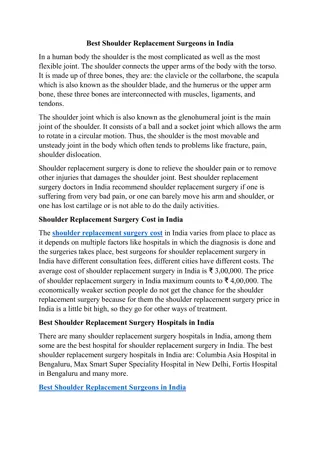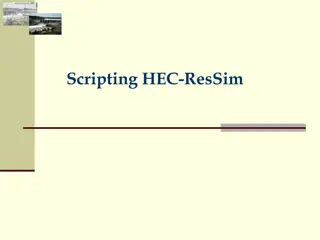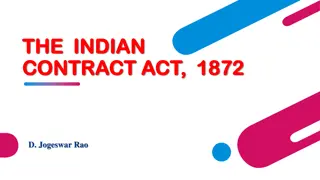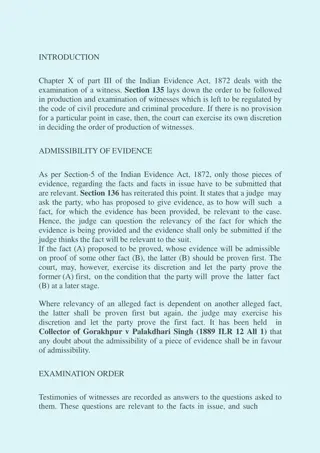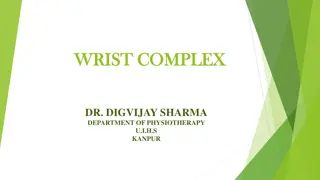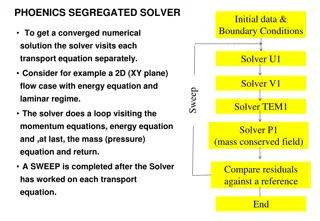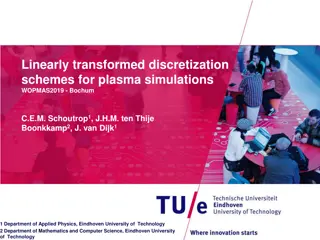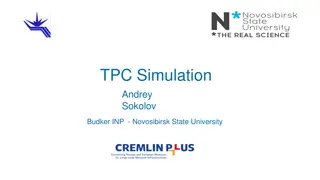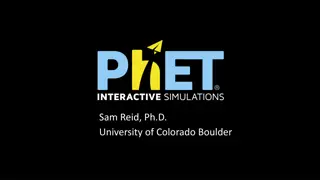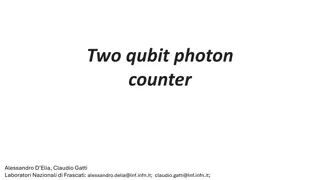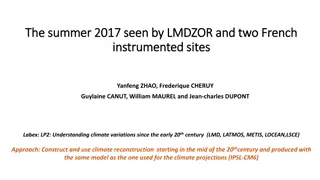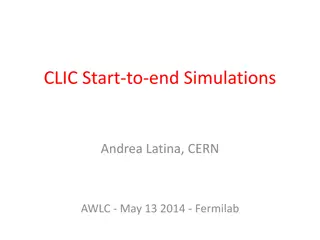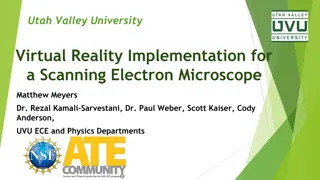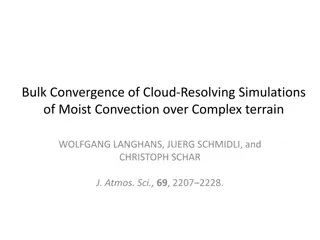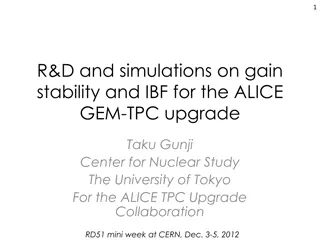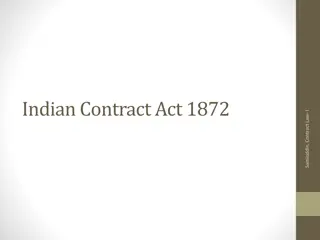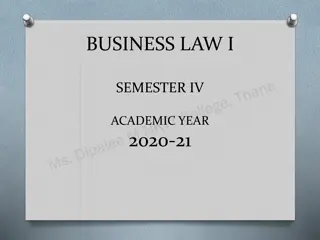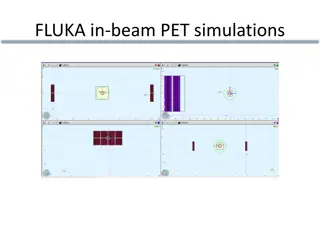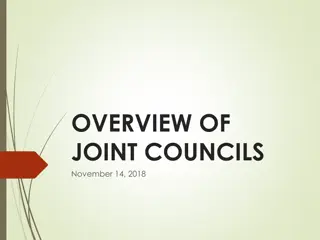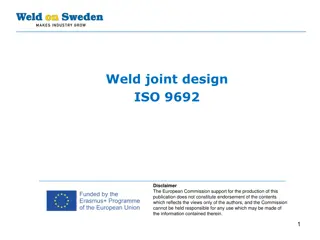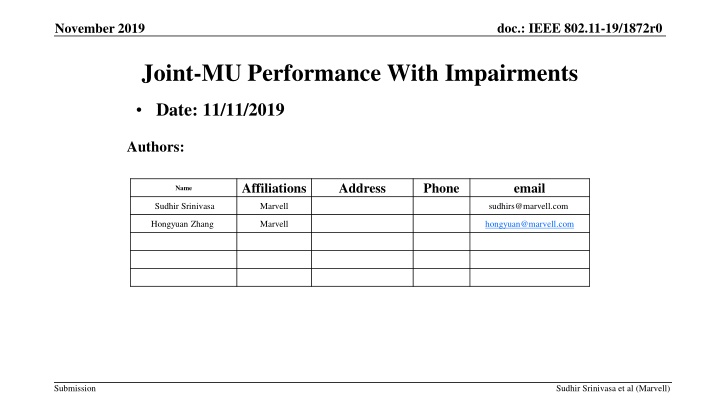
IEEE 802.11-19/1872r0 Joint-MU Performance with Impairments
Explore the impact of impairments on Joint-MU performance in IEEE 802.11-19/1872r0, focusing on CFO, timing sync, PA gain uncertainty, phase uncertainty, and path loss modeling. The study delves into Joint-BF limitations, solutions, and the effective channel under various modeled impairments for multiple clients. Emphasis is on Joint-MU in the presence of non-idealities, such as uncertainties between NDP and data packets. Residual CFO, timing synchronization, and uncertainties are analyzed to understand their effects on channel estimates and performance.
Download Presentation

Please find below an Image/Link to download the presentation.
The content on the website is provided AS IS for your information and personal use only. It may not be sold, licensed, or shared on other websites without obtaining consent from the author. If you encounter any issues during the download, it is possible that the publisher has removed the file from their server.
You are allowed to download the files provided on this website for personal or commercial use, subject to the condition that they are used lawfully. All files are the property of their respective owners.
The content on the website is provided AS IS for your information and personal use only. It may not be sold, licensed, or shared on other websites without obtaining consent from the author.
E N D
Presentation Transcript
doc.: IEEE 802.11-19/1872r0 November 2019 Joint-MU Performance With Impairments Date: 11/11/2019 Authors: Affiliations Address Phone email Name Sudhir Srinivasa Marvell sudhirs@marvell.com Hongyuan Zhang Marvell hongyuan@marvell.com Submission Sudhir Srinivasa et al (Marvell)
doc.: IEEE 802.11-19/1872r0 November 2019 Joint Transmission with Multiple Clients In [1] we studied Joint-BF and simulated the effect of CFO and delay Phase buildup from residual CFO was one of the main factors limiting Joint-BF performance One solution was to add midambles to obtain a more up-to-date channel estimate In this presentation, we will examine Joint-MU in the presence of different impairments Apart from CFO and non-ideal timing sync, we also consider the following additional non-idealities [2, 3]: PA gain uncertainty (at secondary AP) between NDP and DATA packets Phase uncertainty (at secondary AP) between NDP and DATA packets Submission Sudhir Srinivasa et al (Marvell)
doc.: IEEE 802.11-19/1872r0 November 2019 Joint-MU: Model Path loss from each STA to its own AP is XdB higher than that to other AP(s). Uncertainties are modeled only on the DATA portion of the secondary AP transmission. Secondary AP s PA applies an additional gain of mr dB during data transmission Modeling for gain is mr = U[-m, m]dB. Further, secondary AP s signal also has a random phase component (pr deg) between NDP and data This phase is modeled as pr = U[-p, p]. Note: This is different model from LO initial phase which is being corrected during trigger packet The residual initial phase error is modeled as in [1]. Submission Sudhir Srinivasa et al (Marvell)
doc.: IEEE 802.11-19/1872r0 November 2019 Example 1 (1) Consider an example where 2 APs with 2 antennas each transmitting to 3 STAs with 1 antenna each. 2 STAs belong to AP1 s BSS and 1 STA belongs to AP2 s BSS X = 0dB for simplicity 1 ? 1 ? 1 ? 1 1 1 1 1 1 1 1 1 ? ? , and the precoder matrix will be Q = Let s assume the channel is ? = ? ? 1 1 1 ? 1 With residual CFO, residual timing synchronization, and the uncertainties being modeled at AP2 on the JT-MU packet, the effective channel will be 1 1 1 ? 1 ? where, z = ?? ???? ?? n-nth ofdm symbol, k- kth tone index, N-#samples in an OFDM symbol ? ? , ?????,? = ? ? ? ? ? ? exp 1? ? represents all the modeled impairments. ? ? ? = 100.1?? ? = 2? ?? + 2? ???????? + ?? + ??? ,?? 180 Submission Sudhir Srinivasa et al (Marvell)
doc.: IEEE 802.11-19/1872r0 November 2019 Example 1 (2) The SIR at STA 1 can be calculated in closed form to be equal to 2+ 2?? 2 2+ 4?? cos ? 2sin2(?) 2 1 + ?? 1 ?? ???(?,?) = We can analyze the average SIR across tones after N=15 OFDM symbols Impairments we sweep over are: ????={5, 20, 50} Hz. ??????={0.78, 0.15} ns mr = U[-m, m], m = {0, 0.25, 0.5, 0.75, 1} dB pr = U[-p, p], p = {0, 2, 5} deg Phase sync error = 1deg Submission Sudhir Srinivasa et al (Marvell)
doc.: IEEE 802.11-19/1872r0 November 2019 Example 1 Analysis For ??????= 0.15 ns, considering 15 HE (4x+3.2us) symbols SIR supported = 25 dB (m (dB), p(deg)) = (1.75 dB, 6 deg) (1.75, 4) or (1.5, 6) (1.5, 4) 28 dB (1dB, 4 deg) (1, 4) (0.25, 4) 32 dB (0.75 dB, 1 deg) (0.5, 1) (0, 1) CFO = 5 Hz 20Hz 50 Hz Very stringent requirements to reach SIR 32 dB (MCS11) With ~20Hz CFO, magnitude uncertainty < 0.5 dB and phase uncertainty < 1 deg needed. To reach SIR 28 dB (MCS9) With ~20Hz CFO, magnitude uncertainty < 1 dB and phase uncertainty < 4deg needed. For ??????= 0.78 ns, considering 15 HE 4x+3.2us symbols Only SIR 28 dB can be achieved at the 15th OFDM symbol for residual CFO = 20 Hz with magnitude variation less than 0.25 dB and phase variation less than 2 deg. SIR > ~30dB is not achievable Submission Sudhir Srinivasa et al (Marvell)
doc.: IEEE 802.11-19/1872r0 November 2019 Example 2 Consider a second example where each AP have 2 antenna and 2 STAs each with 1 antenna. 1 1 ? ? ? ? ? 1 ? 1 1 ? 1 ? ? Lets say the effective channel is ? = , and the precoder matrix will be Q = ? . ? ? ? ? = 100.1?, where X is the path loss difference (dB) as specified in slide 4. c is the normalizing factor applied at transmitter. With residual impairments the effective channel is 1 1 ? ? ? ? ? ?? , where z is same as in example-1. ?????,? = ? ? ? As in example-1 the precoder matrix will remain same and hence the SIR at AP1 is given as 1 + ? 2?? 2+ 2? ?? cos ? 2 2 ? ???(?,?) = 2 ? ? (1 ? )???(?)2+ ?? 21 + ? 2sin2? 1 ? ?? Submission Sudhir Srinivasa et al (Marvell)
doc.: IEEE 802.11-19/1872r0 November 2019 Example 2 (2) As in Example-1 the precoder matrix will remain same and hence the SIR at AP1 is given as 1 + ? 2?? 2+ 2? ?? cos ? 2 2 ? ???(?,?) = 2 ? ? (1 ? )???(?)2+ ?? 21 + ? 2sin2? 1 ? ?? For small ? (very ideal case - small CFO, phase sync, timing sync) this can be further simplified to: 2 ? 1 ??? ?,? ? 1 + ? 1 + ?? 2+ ?? 2?? 1 ?? ? A higher X directly drives down the influence of impairments and uncertainties. Submission Sudhir Srinivasa et al (Marvell)
doc.: IEEE 802.11-19/1872r0 November 2019 Performance analysis: Simulation Setup Familiar case of two APs each with 4 antennas and serving single client each with 2 receive antennas Only residual timing/frequency offsets between master slave APs are modeled Residual CFO at AP2 Carrier drift at AP1 Propagation Delay (us) Timing synchronization error (ns) Phase synchronization error (deg) NDP 20 Hz 0 Hz 0.2 us 0 ns 0 deg Data packet 20 Hz 10 kHz 0.2 us 0.78 ns 0.58 deg IEEE Channel D Ng=1 feedback without any quantization (no compression/decompression) 15 Data OFDM symbols HEW LDPC packet is considered with 4x+3.2 LTF Midambles are NOT modeled. Uncertainty values considered (symmetric uniform distribution U[-x, x]) Magnitude: m = {0, 1} dB Phase: p = {0, 2, 5} deg Pathloss difference component: x = {0, -3, -6, -10} dB Submission Sudhir Srinivasa et al (Marvell)
doc.: IEEE 802.11-19/1872r0 November 2019 Magnitude Uncertainty: m = 0 dB Around 1.7-1.9x improvement without any magnitude/phase uncertainty. Around 1.5-1.8x improvement with 5deg of phase uncertainty Delay reduces the throughput in low SNR region. Submission Sudhir Srinivasa et al (Marvell)
doc.: IEEE 802.11-19/1872r0 November 2019 Magnitude Uncertainty: m = 1 dB Around (1.4-1.7)x improvement with 1dB magnitude uncertainty Marginal degradation is observed with 5 deg of phase uncertainty. Magnitude difference of 1 dB dominates the performance degradation. Good improvement observed when the secondary AP has 10dB pathloss difference component. Submission Sudhir Srinivasa et al (Marvell)
doc.: IEEE 802.11-19/1872r0 November 2019 Inferences Up to 1.9x improvement can be achieved in a 2 AP serving 2 user scenario Even in the presence of different impairments and uncertainties. Design Requirements: Tight Timing synchronization typically needed for higher rates Accurate CFO estimation, together with periodic midambles to reset the channel estimate Highly accurate Tx power calibration required at each AP between NDP & Steered packet transmission. Necessitates tighter phase control, may need smaller gain steps User selection for joint transmissions is crucial (choice of X) Further investigation needed for: Higher user loading/Longer packets Quantization effects (tone grouping, compression-decompression) Efficiency comparison Submission Sudhir Srinivasa et al (Marvell)
doc.: IEEE 802.11-19/1872r0 November 2019 References 1. IEEE 802.11-19/1094r0 2. IEEE 802/11-10/1089r0 3. IEEE 802.11-19/1597r0 Submission Sudhir Srinivasa et al (Marvell)

